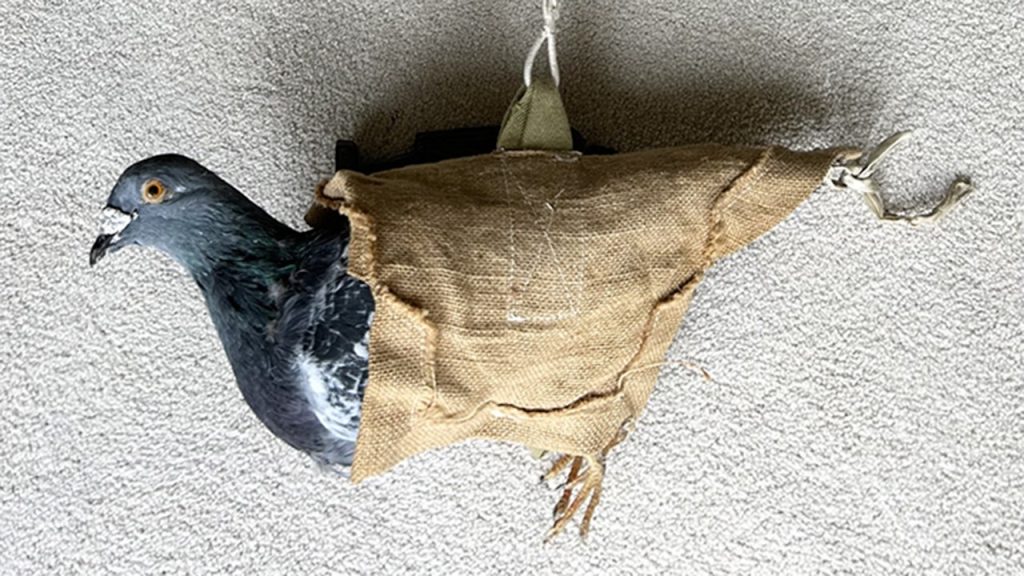A rare parachute that was reportedly attached to pigeons to carry handwritten messages during World War II has been found after approximately 80 years. The parachute was recently donated to the House on the Hill Toy Museum in Standsted, Essex, England, after being discovered in an old shoebox that belonged to a woman named Mrs. Ellington. Ellington’s relatives found the parachute along with other items and documents related to D-Day, leading to the belief that the parachute was used before the June 6, 1944 landings.
The unique parachute is now on display at the D-Day exhibition at the House on the Hill Toy Museum, showcasing toys and vintage artifacts. Carrier pigeons have been used as a method of long-distance communication for over 2,000 years, with their use dating back to the Romans and being utilized during World War I. The US Army Signal Corps established a pigeon service in 1917, at the urging of General of the Armies John Pershing. During World War II, carrier pigeons were still used as a way to communicate in emergencies, with pigeons being carried wherever the Army, Navy, Coast Guard, or Marines were deployed.
Pigeons were essential in providing valuable information across enemy lines, reporting on enemy troops, gun positions, pending attacks, traffic conditions, and other vital data. In situations where traditional means of communication were limited, such as advanced observation posts near enemy lines, pigeons were often the only way to send messages. The pigeon parachute that is on display at the House on the Hill Toy Museum is a later model that was used to drop messages over the French countryside before the Normandy invasion in June 1944 to alert civilians of German troops’ whereabouts.
During World War II, carrier pigeons played a significant role in communication, especially in situations where other methods were unavailable or unreliable. The discovery of the pigeon parachute at the House on the Hill Toy Museum sheds light on this unique aspect of wartime communication and showcases the importance of carrier pigeons in relaying crucial information. The parachute, along with other artifacts related to D-Day, provides a tangible connection to the events of that period and serves as a reminder of the ingenuity and resourcefulness employed during World War II. The preservation and display of such items in museums like the House on the Hill Toy Museum allow future generations to learn about and appreciate the history and significance of these wartime innovations.













